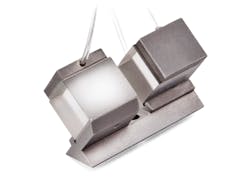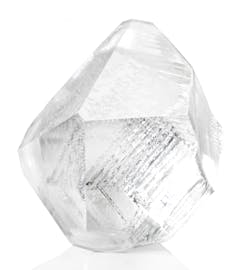Optical Materials: RTP optical crystal helps boost performance of LIGO
YEHIEL PLAUT
The Laser Interferometer Gravitational-Wave Observatory (LIGO) detects gravitational waves of cosmic origin through laser interferometry. It was built by Caltech/MIT to test a prediction made by Albert Einstein as part of his theory of relativity—the existence of gravitational waves, which provide information about movement of objects in the universe. Gravitational waves are ripples in the fabric of space-time caused by violent cosmic events, like black-hole collisions and star explosions.
LIGO consists of two laser interferometers located thousands of kilometers apart, one in Louisiana and the other in the state of Washington. The interferometers each have two 4-km-long perpendicular arms along which a laser beam is shone and reflected by mirrors at each end. If a gravitational wave passes by, the arms of the interferometer alternately lengthen and shorten due to the stretching and squashing of space, creating optical interference.
Upgrade to Advanced LIGO
The LIGO’s test masses are mirrors incorporated into the interferometer. As it turns out, laser photons can cause a recoil effect, distorting readings—in response, the mirrors were made larger to reduce this distortion. The LIGO’s suspension was also improved to further reduce noise, using a series of pendulums and passive/active seismic isolation mechanisms that enabled vibrations to be reduced to a minimum. These improvements, known as the Advanced LIGO, resulted in instruments that began their first formal science observations in September 2015 with 4X the sensitivity of the original LIGO interferometers.
After just a few months, the LIGO team announced the Advanced LIGO’s first detection of gravitational waves, a milestone for science. This initial detection was followed by multiple detections throughout 2016 and 2017, each one providing more insight into the nature of gravitational waves. The perturbations of the waves are so small that Albert Einstein doubted they would ever be detectable. For example, the first detection (known as GW150914) changed the length of a 4 km LIGO arm by a length equivalent to 1/1000 of the width of a proton.
Upgrading the sensitivity of the LIGO detectors for the Advanced LIGO involved increasing the laser power from the initial value of 10 W to about 200 W. As can be expected, the input optics needed improvement to accommodate this higher-power operation. The length and alignment sensing schemes of the LIGO rely on the optical sidebands generated by electro-optic modulators. The original lithium niobate (LiNbO3) electro-optic modulators needed replacement, as they would otherwise suffer from severe thermal lensing, damage, and residual absorption, rendering them unsatisfactory. After lab experiments and consultation with Raicol Corporation, the decision was made to use a Raicol RTP crystal Q-switch (see Fig. 1).
Use of RTP crystal in Advanced LIGO
Rubidium titanyl phosphate (RbTiOPO4, or RTP) brings a set of benefits over LiNbO3, allowing the Advanced LIGO to operate at high laser power levels without experiencing thermal lensing or damage, contributing to the overall success of the system (see Fig. 2).Why RTP over LiNbO3? When it comes to optical absorption, LiNbO3 has a much larger optical absorption than RTP, resulting in much stronger thermal lensing. In addition, experiments on LiNbO3 have revealed that the material produces a large ellipticity in beam profile, as well as occasional surface damage at high power levels, making it not sufficient as a modular material for the Advanced LIGO.
RTP’s total absorption coefficient is as low as 50 ppm/cm, including scattering and second-harmonic generation. This leads to a focal length of the induced thermal lens of about 200 m, which represents a sag change of <0.5% of the wavelength at a power of about 200 W.
Studies of RTP thermal lensing showed no difference in the beam waist position or beam divergence at 1 and 30 W, and only a very slight decrease in divergence angle at 60 W. However, the measurement error in the experiment was greater than this observed change, allowing an overall conclusion that there is no thermal lensing observable within the measurement accuracy. The RTP-based electro-optic modulators can withstand several hundred watts of continuous laser power without degradation to the beam profile.
RTP has a damage threshold of more than 600 MW/cm2 when antireflection (AR) coated, in comparison to LiNbO3, which has a damage threshold of just 280 MW/cm2. The high damage threshold of RTP crystals is indicated by the material’s high resistivity (in the range of 1011 ohm-cm), making the crystal suitable for electro-optic phase modulation. When subjected to 90 W of light at a 1064 nm wavelength for 300 hours, RTP crystals showed no changes, including no damage and no induced absorption. Based on the power and intensity of the laser beam in the LIGO, the RTP Q-switch and its coating are unlikely to be damaged during laser operation.
Yehiel Plaut is vice president of sales and marketing at Raicol Crystals, Rosh Haayin, Israel; e-mail: [email protected]; raicol.com.

